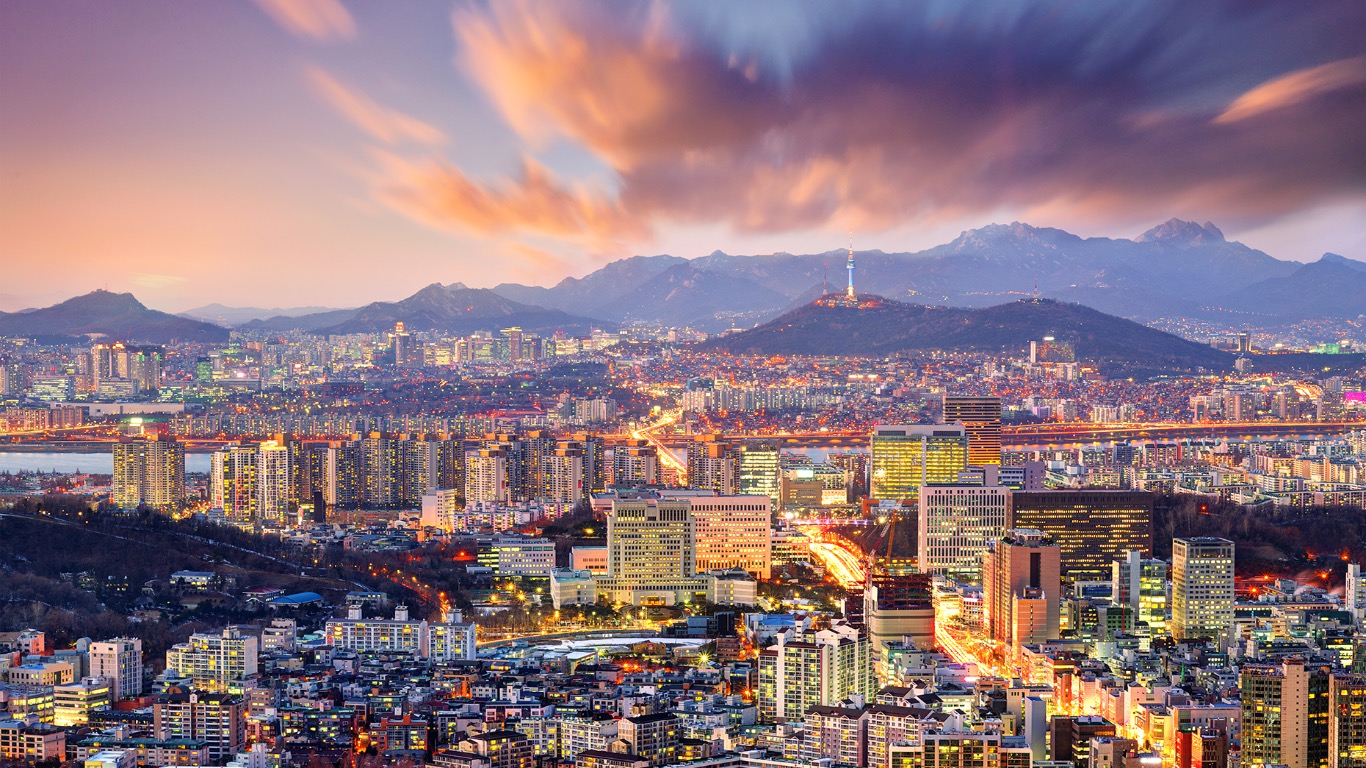Explore Seoul: top things to do, where to stay and what to eat
Discover a thrumming metropolis filled with Buddhist temples, street-food markets, slick hotels and imaginative green spaces.
Why go to Seoul?
South Korea’s capital is a sprawling, skyscraper-filled city, but it’s a place interwoven with vast tracts of greenery, glorious temples and urban rivers too. It’s also where you’ll find some of Asia’s best food – not just the cheap-and-cheerful delicacies sold at street food stalls, but at the growing number of restaurants helmed by chefs keen to put modern twists on South Korean cuisine. Expect everything from fresh takes on kimchi – South Korea’s UNESCO-listed national dish – to elaborate makeovers of corn dogs, the batter-covered, sugar-sprinkled hot dogs sold throughout the city.
Although Seoul’s sheer size can seem intimidating at first, it’s surprisingly easy to explore, with a slick MRT (metro) system which makes it easy to whizz from downtown areas such as Jongno-gu to historic neighbourhoods on Seoul’s outskirts. And there’s never any shortage of places for some time out. Seoul is a city designed with liveability in mind. Areas such as Cheonggyecheon, a walking path-lined stream, and Gyeongui Railway Forest Park (both of which you’ll find in the city centre) are flora and fauna-filled paradises in the heart of the city.
But Seoul’s liveability doesn’t just stem from its green space. Seoulites are famously friendly – struggle up an MRT staircase lugging a suitcase and it won’t be long before a local will insist on carrying the bag to the top. Signs on the MRT and on buses (quiet, calm spaces where talking is kept to a minimum and eating is frowned upon) urge people to behave considerately. The fluffy bears bearing the MRT logo and used as place markers to ensure elderly, disabled or pregnant travellers will always have a seat on trains are an omnipresent reminder that consideration for others is a priority for Seoul’s citizens.
Here’s a guide to what might just be Asia’s coolest city.
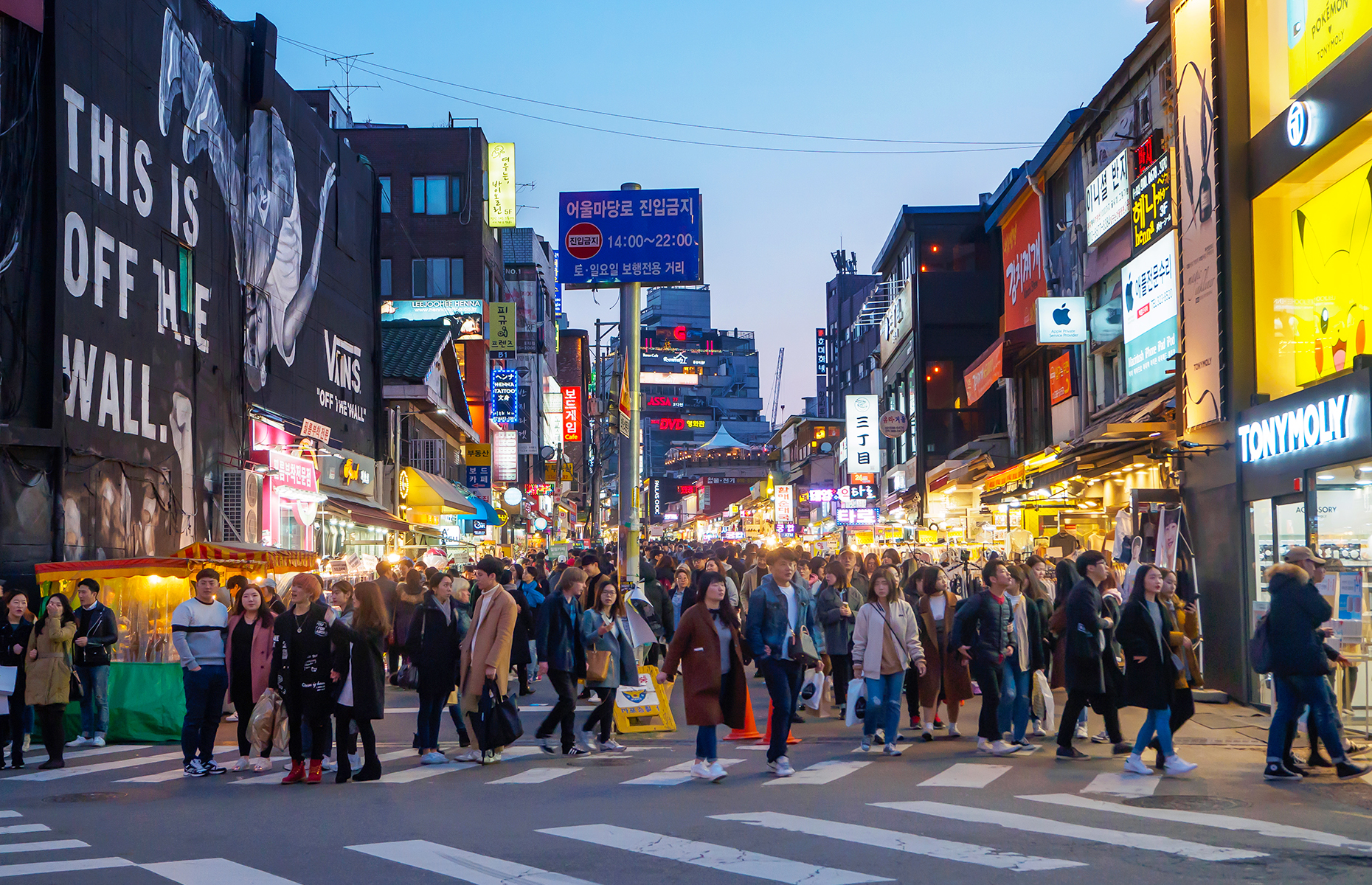
Must-see sights in Seoul
1. Hongdae
Hongdae is Seoul’s liveliest neighbourhood, known for its barbecue restaurants, bars and independent boutiques, as well as K Beauty shops and countless vintage stores. Similar to Tokyo’s Harajuku neighbourhood, it’s fun, frenetic and drenched in neon, and you don’t have to splash out to have a great time either.
One of the liveliest thoroughfares is Eoulmadang Street, where wannabe K-Pop stars perform energetic dance routines for the public. Keep an eye out for the selfie stores – unmanned businesses with a series of prop-filled photo booths. Seoulites flock here to don a quirky hat, animal ears or eyewear and snap some selfies, printed with suitably weird and wonderful backdrops featuring cartoon characters or comic book-themed landscapes.
2. Cheonggyecheon
This is a seven-mile (11km) stream that flows through downtown Seoul. The result of an urban renewal project that transformed a stream dating back to the Joseon Dynasty (1392–1910), the waterway flows from the Cheonggye Plaza arts venue before spilling into the Hangang River.
Its riverside walking trails can easily be broken down into smaller sections – it passes under 22 bridges and walkers can hop from one side to the other using the regular stepping stone crossing points, or perch on one of the benches and watch herons pluck fish from the glass-clear water.
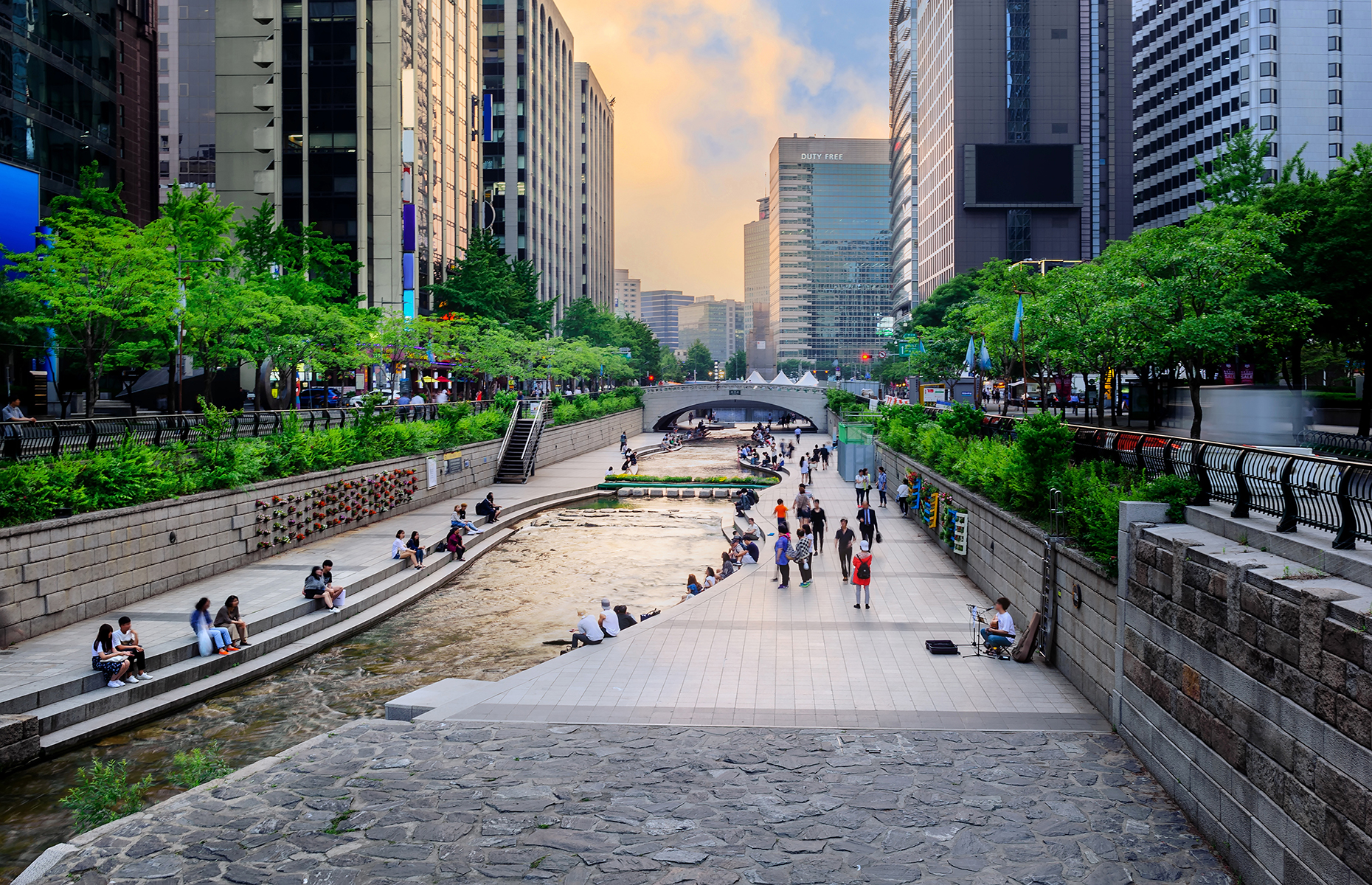
3. National Palace Museum of Korea
Head to the National Palace Museum of Korea to check out 45,000 artefacts from the Joseon Dynasty. One of the most fascinating galleries (although it’s probably not for the squeamish) is the one which looks at traditions associated with birth, death and marriage.
Exhibits here include a stone placenta pot once used by the royal family. When a member of the royal family gave birth, both the placenta and the umbilical cord (the energy of which was believed to be connected to the prosperity of the nation) would be placed in the pot and stored in a mountain.
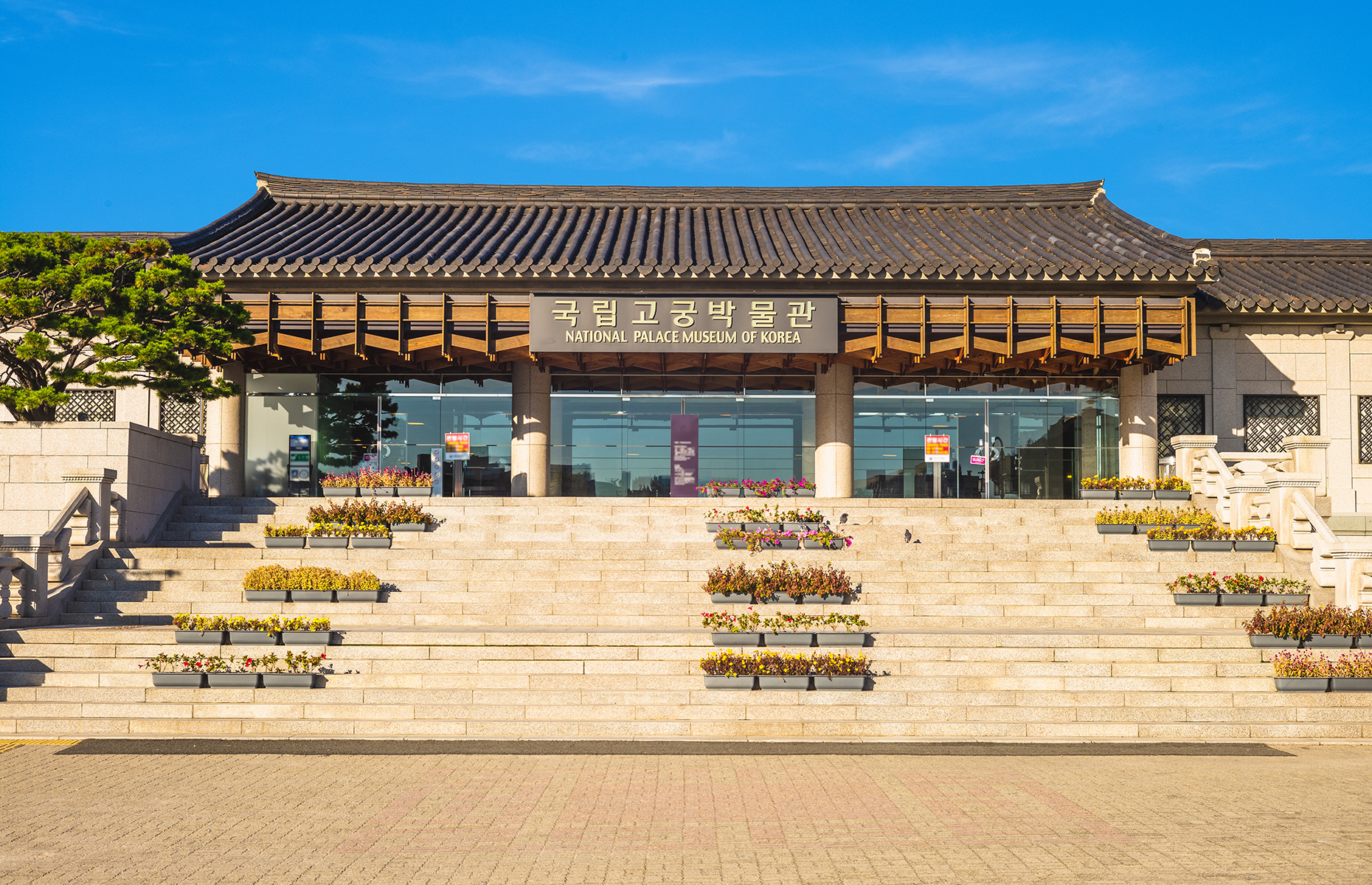
4. Gyeongui Railway Forest Park
Another brilliant example of the government’s determination to carve out tracts of green space in the centre of the city, the Gyeongui Railway Forest Park is a four-mile (6km) linear park and walking trail that sits in the footprint of a former railway. It passes through some of Seoul’s most colourful neighbourhoods, including Hongdae and Yeonnam-dong.
We suggest taking the time to walk the entire route. The sections that skirt residential areas are a great way to gain an insight into local life, and the route is lined with art installations, pop-up stores and picnic spots.
READ MORE: the world's most beautiful temples
5. Bongeunsa Temple
This is more of a complex than a single temple, although the star of the show is certainly the Bongeunsa Buddhist temple, which dates back to AD 794. It’s a wonderfully tranquil spot, right in the middle of Seoul – visitors explore the site to a soundtrack of monks chanting, and are welcome to enter the main temple and sit in silence for a few moments.
Highlights include the Avatamsaka Sutra woodblock carvings, and both locals and tourists can gain a deeper insight by signing up for Dado tea drinking ceremonies and Korean zen meditation sessions.

Alternative highlights in Seoul
1. The Starfield Library
Located in the centre of the COEX Mall, just across the road from the Bongeunsa Temple, the beautiful Starfield Library is famous for its 50,000 books and 43-foot (13m) tall shelves, which curve around a central, two-storey atrium.
Rotating artworks in the library’s centre have included trees and towers made entirely from books, and the library itself has several cafés, boutiques and restaurants. The best place for a caffeine fix is the Billy Angel Cake Company (the chocolate cake is to die for). Be prepared to dodge a few selfie sticks – the Starfield Library is where Seoul’s hippest teens come to pose against the book-themed backdrop.
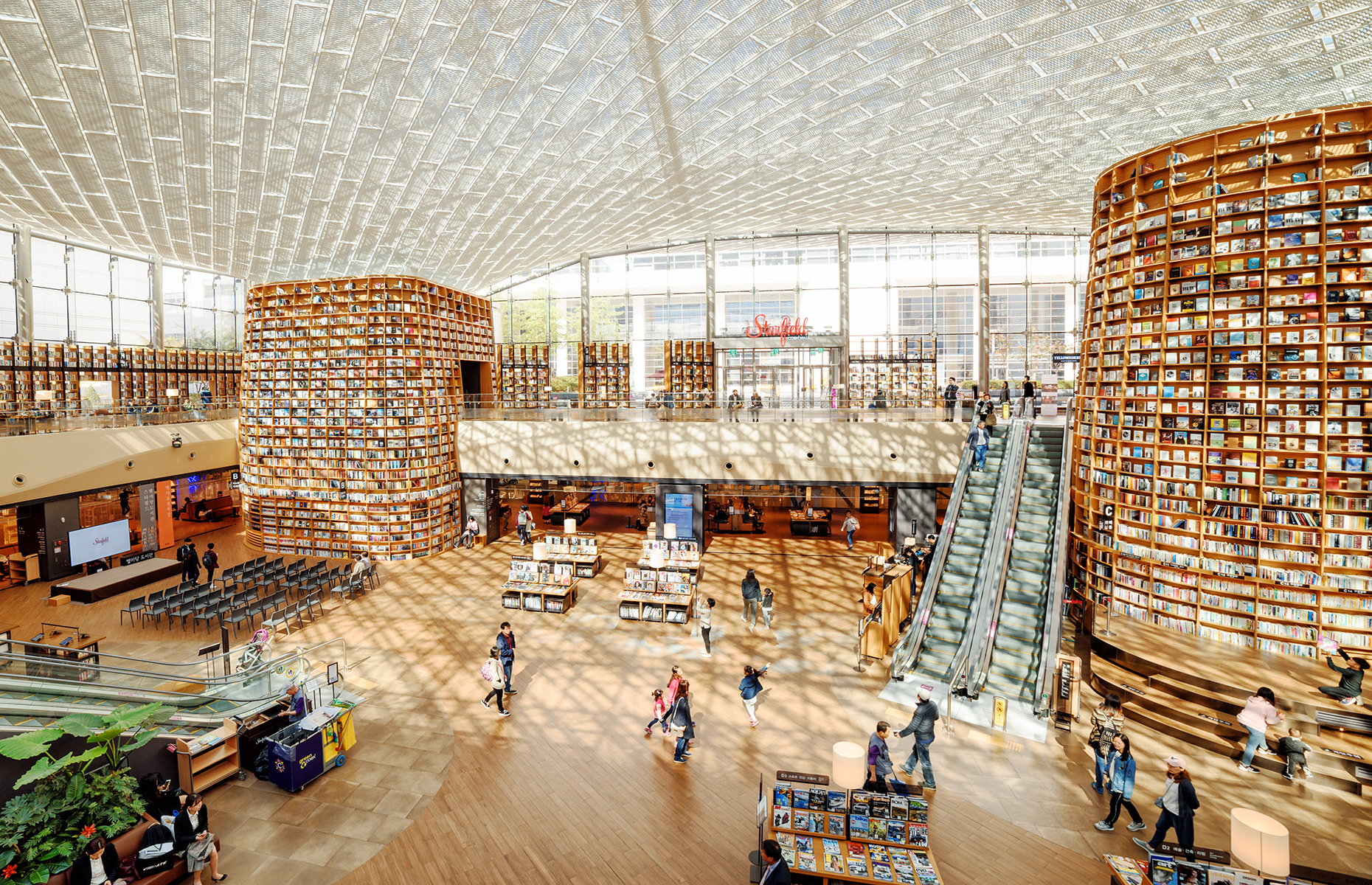
2. The DMZ
This is the heavily militarised area around the 2.5-mile (4km) strip of wilderness surrounding the demarcation line between North and South Korea. A visit provides a fascinating insight not only into the world’s most militarised border but the two countries’ fractious history (the two countries are technically still at war).
You’ll need to book in advance and bring your passport (there are numerous military checkpoints) and the area can only be explored on guided tours. Highlights include the viewpoint from which you can peer into North Korea and the chance to wander down one of the tunnels dug by the North Koreans (only discovered – and promptly sealed – when a North Korean geologist defected and revealed all).
You’ll also see memorials to those wrenched apart by the conflict – a harrowing reminder of the war’s innocent victims. To book, visit koridoor.co.kr.
3. Gwangjang Market
This Jongno-gu market is where you’ll find some of Seoul’s best street food – and a wide range of other foods, including supersized octopus, pigs’ intestines and chicken feet. Mung bean pancakes and seafood are the specialities, but there’s little you can’t find here.
Other specialities include kimbap (seaweed – kim – wrapped around rice – bap) and corn dogs, which are hot dogs encased in batter and panko (a type of breadcrumb) and sprinkled with sugar. It’s a great place to line your stomach before a night on the town, or you could just stay put and enjoy a chilled bottle of Cass, a popular South Korean lager.

4. N Seoul Tower
A slick funicular will whizz you to the hilltop N Seoul Tower in five minutes – or you can walk up, although the route’s steepness means we suggest ditching the funicular on the way down instead.
From the top, you’ll gain a whole new perspective on Seoul – not just its size, but its layout. South Korea’s capital is a sprawling one, but it’s filled with green spaces and its neighbourhoods flow around the bases of city centre temple-topped hills. If energy levels flag on the way down, grab one of the honeycomb lollies (made famous by South Korean TV series Squid Game) sold at stalls lining the route.
READ MORE: Terrific towers with views worth the climb
5. The food
Seoul’s famous for both kimchi and barbecue restaurants, but its food scene is one the world’s most diverse. Hongdae is where you’ll find some of the best barbecue restaurants (mostly DIY affairs where you’ll sit at a table with a built-in grill and be provided with a tray of raw meat), but there are some brilliant fine-dining restaurants specialising in South Korean cuisine too.
Our favourites include the Fairmont Ambassador Seoul’s Mariposa (splash out on the degustation menu for a heavenly hybrid of French and Korean cuisine) and the Seoul Four Seasons’ Maru for delicious Korean cuisine in a laid-back setting.
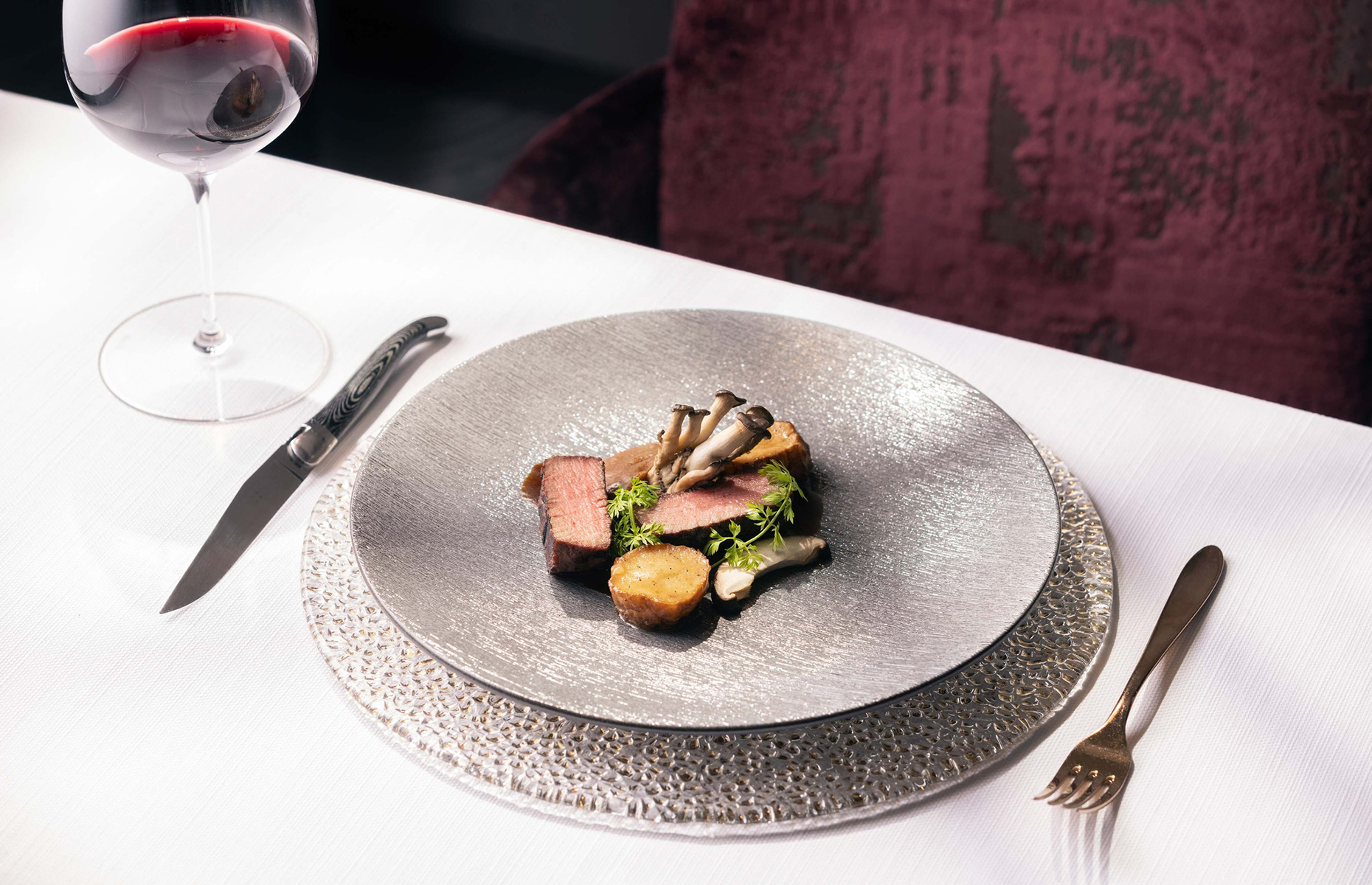
Where to stay in Seoul
Yeouido Business District
Yeouido has some of Seoul’s slickest (and tallest) hotels, many of which have fantastic river views. It’s technically an island but still makes a great base – the Yeouido Station is just a few stops from Seoul Central Station, the arrival point for the AREX trains which connect downtown Seoul with Incheon International airport.
The Yeouido Business District is also where you’ll find the Hyundai Seoul shopping centre, a beautiful place for some retail therapy with an indoor waterfall and forest park. Don’t miss the Bellygom store, named after a cute pink bear that started life as the mascot for a shopping channel. Visit the store to pick up some merchandise, snap a selfie with Bellygom and dive into a bright pink, Bellygom-themed ball pit.
If you’re staying in Yeouido, we recommend the Conrad Seoul, where highlights include the gorgeous VVertigo rooftop bar and the Noodle Bar for delicious East Asian cuisine.
Gangnam-gu
A neighbourhood made famous by South Korean rapper PSY, Gangnam-gu has it all, from sprawling shopping malls (as well as the flagship store of South Korean brand Kakao Friends, a group of animated animals who adorn everything from toasters and T-shirts to lampshades and cushions) to galleries and temples – including the city’s most famous one, Bongeunsa Temple.
Make sure you stop by Gangnam-gu station to pose for a selfie by the sculpture which pays tribute to PSY and features silhouettes of the rapper performing his famous 'Gangnam Style' dance moves.
How to get to Seoul
Korean Air and Asiana Airlines both offer direct flights from London Heathrow to Seoul Incheon. Returns start from around £800 ($909).
READ MORE: Asia's most inspiring towns and villages
Lead image: Sean Pavone/Shutterstock
Comments
Be the first to comment
Do you want to comment on this article? You need to be signed in for this feature
